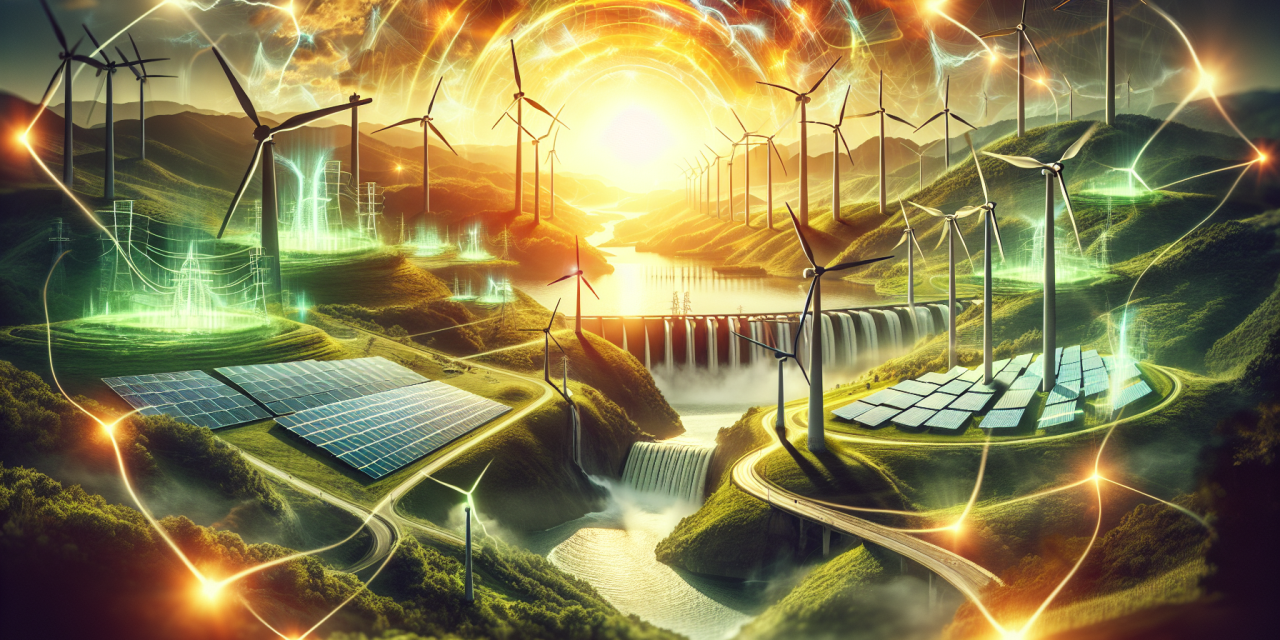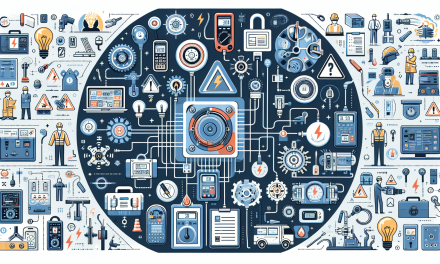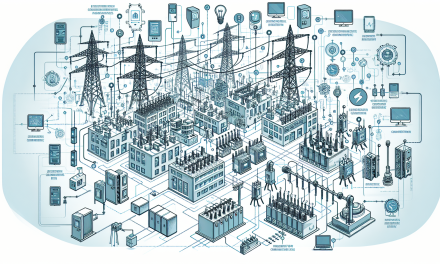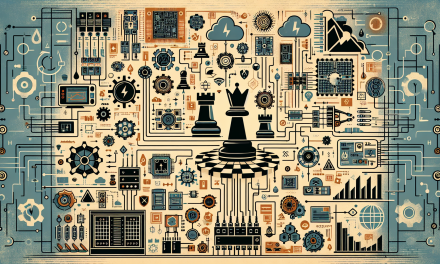Table of Contents
- Introduction
- Understanding Renewable Energy
- Types of Renewable Energy
- Benefits of Renewable Energy
- Challenges and Strategies
- Energy Management Systems
- Electrical Power Systems
- Frequently Asked Questions (FAQs)
- Conclusion
Introduction
Renewable energy forms the backbone of a sustainable future. As concerns about climate change and resource depletion grow, understanding the principles of renewable energy becomes essential. This exploration not only builds awareness but also equips individuals and organizations to make informed decisions in their pursuit of energy solutions. In today’s discussion, let’s delve into the fundamentals of renewable energy, its various forms, and the pathways toward its efficient implementation.
Understanding Renewable Energy
Renewable energy comes from natural resources that replenish themselves. Unlike fossil fuels, which take millions of years to form, renewable sources such as solar, wind, hydro, geothermal, and biomass can regenerate. These sources offer not only environmental benefits but also economic opportunities. More importantly, understanding how they work and their interconnections can empower individuals to contribute to energy sustainability.
Why Renewable Energy Matters
Firstly, renewable energy contributes significantly to reducing greenhouse gas emissions. By transitioning to cleaner sources, we can combat air pollution and mitigate climate change. Secondly, renewable energy boosts energy security by decreasing dependence on imported fuels. This transition promotes energy independence and contributes to more stable energy prices.
Types of Renewable Energy
The world of renewable energy is diverse, with each type offering unique advantages and applications. Understanding these types helps in selecting the appropriate solutions for various scenarios.
Solar Energy
Solar energy harnesses the sun’s power using solar panels and photovoltaic systems. This form of energy is abundant and particularly beneficial in areas with high sunlight exposure. Moreover, the technology has advanced rapidly, leading to decreased costs and increased efficiency.
Wind Energy
Wind energy captures kinetic energy from wind through turbines. The appeal of wind energy lies in its cost-effectiveness and the small footprint of wind farms. However, selecting appropriate locations is crucial to maximize efficiency.
Hydropower
Traditionally, hydropower has been the largest source of renewable energy. It generates power by using flowing water, typically from rivers or dams. While impactful, it is essential to consider the environmental implications, such as effects on aquatic ecosystems.
Geothermal Energy
Geothermal energy utilizes heat from the earth’s core. This reliable energy source ensures a consistent power supply, regardless of weather conditions. Additionally, it requires minimal land compared to other renewable sources.
Biomass
Biomass refers to organic materials used for energy production. This includes agricultural waste, wood, and other biological materials. Though it releases carbon dioxide, it can still provide a net positive impact when managed responsibly.
Benefits of Renewable Energy
Moving toward a renewable energy future offers numerous benefits that resonate across environmental, economic, and social dimensions.
Environmental Benefits
The environmental benefits of renewable energy are significant. For example, reducing reliance on fossil fuels leads to decreased carbon emissions, which are a primary driver of climate change. Additionally, using renewable resources helps conserve precious water supplies and reduces air pollution.
Economic Opportunities
Renewable energy drives economic growth through job creation and innovation. With the global shift toward green technologies, new professions emerge in energy efficiency and sustainable resource management. Moreover, utilizing local energy sources can stimulate local economies.
Energy Independence
Transitioning to renewable energy enhances a nation’s energy independence. Countries can reduce reliance on imported fuels, which often fluctuate in availability and prices. Investing in local resources cultivates resilience and stability.
Challenges and Strategies
Despite its benefits, renewable energy adoption faces several challenges. Various integration hurdles complicate the widespread implementation of these technologies.
Integration Challenges
One of the main challenges is integrating diverse energy sources into existing grids. For example, solar and wind energy vary significantly in availability based on location and weather. This variability necessitates robust energy management strategies that balance supply and demand.
Overcoming Integration Challenges
Several strategies exist to address these challenges. Firstly, investing in energy storage technologies like batteries bolsters the ability to store excess energy for future use. Secondly, enhancing grid infrastructure ensures better integration of various energy sources, accommodating future renewable energy needs.
Energy Management Systems
Implementing effective energy management systems (EMS) holds fundamental importance in optimizing energy usage and improving efficiency. The EMS promotes systematic monitoring and control of energy consumption, contributing to a more sustainable approach.
Understanding BS EN 16001 and ISO 50001
For organizations, understanding and implementing standards like BS EN 16001 and ISO 50001 provides essential frameworks for energy management. These standards guide organizations to enhance their energy performance, ensure compliance, and foster a culture of continuous improvement.
Electrical Power Systems
Electrical power systems play a crucial role in transferring energy from generation facilities to consumers. Mastering the analysis and design of these systems is essential for ensuring efficient and reliable energy delivery.
Power Systems Analysis and Design Essentials
Grasping the fundamentals of electrical power systems simplifies the process of managing energy flows. By understanding how to analyze energy systems, individuals can identify potential improvements and adapt to evolving energy landscapes. For further insights, check out this article on mastering electrical power systems.
Frequently Asked Questions (FAQs)
What are the key benefits of renewable energy?
Key benefits include reduced greenhouse gas emissions, energy independence, job creation, and economic growth. Additionally, renewable energy sources provide sustainable alternatives to fossil fuels.
How does energy management contribute to renewable energy?
Energy management systems optimize energy usage, minimize waste, and ensure that renewable sources are effectively integrated. By managing energy flows intelligently, organizations can maximize efficiency and sustainability.
Are there any challenges in implementing renewable energy?
Yes, challenges include integration into existing energy systems, variability in energy sources, and the need for infrastructure upgrades. However, using advanced technologies and strategies can help overcome these hurdles.
Where can I learn more about renewable energy?
For in-depth knowledge on renewable energy, consider exploring the Fundamentals of Renewable Energy Certification Course. Additionally, resources like this article on renewable energy sources and this article on overcoming integration challenges provide valuable insights.
Conclusion
Renewable energy stands as a vital component in building a sustainable future. As we embrace its principles, explore its forms, and recognize its benefits, we empower ourselves to contribute to a greener planet. By staying informed and engaged, individuals and organizations can drive change and adopt practices that promote the efficient use of renewable resources. Overall, the knowledge and actions taken today will undoubtedly pave the way for a healthier environment and a thriving economy tomorrow.





